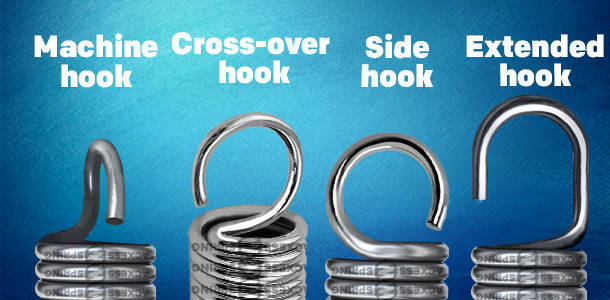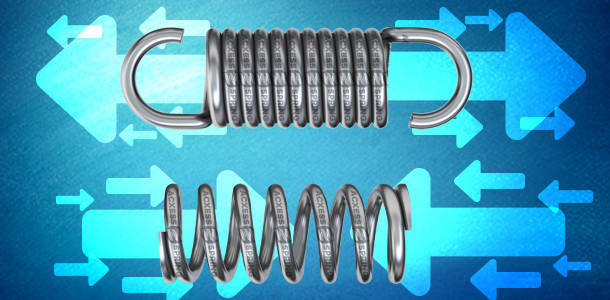5 Extension Spring Facts
Attention! Input results shown will be +/- 10% from middle value. Hint: The closer your min and max inputs are, the more accurate your results will be!
Attention! Input results shown will be +/- 10% from middle value. Hint: The closer your min and max inputs are, the more accurate your results will be!
Attention! Input results shown will be +/- 10% from middle value. Hint: The closer your min and max inputs are, the more accurate your results will be!
Extension springs are used in many different devices and products. Their expansion and retraction movement facilitates different functions and their variety in dimensions and lengths makes them incredibly versatile for all sorts of applications. This and more makes extension springs the second most popular type of spring right after compression springs. Learn more about extension springs and some interesting facts on them below.
1. Extension spring names. Many times extension springs can also be referred to as tension springs, expansion springs, or pull springs. These names all refer to the type of deformation that an extension spring undergoes when a load is placed on its sides. As the load becomes greater, the extension spring is pulled/extended further. Once it is released, it returns to its original shape.
2. Extension spring hooks. Due to the nature of extension springs, these tend to have hooks on the sides. The extension spring hooks attach to the part of the device that will be placing a load on the spring. There are 4 main types of extension spring hooks (also known as loops). These are: machine hooks, crossover center hooks, side hooks, and extended hooks.

3. No hooks. Since the weakest point of an extension spring is its hooks. If the load pulling on the spring exceeds the safe load considering hook stress, there is a chance the hooks will bend and/or break. In cases where the load is heavy or the wear is expected to be very constant, the engineers will opt for NO HOOKS. Instead, bolts can be screwed into the ends of the extension springs and have certain head configurations, so that they act as hooks. Having no hooks diminishes the weakest point of the spring and allows it to withstand greater force.
4. Extension springs vs. Compression springs. Extension springs act opposite of compression springs. Compression spring coils are spaced out in their original state and these absorb energy when pressed down, releasing it when the load is removed. Extension springs do the exact opposite. At their original state, the coils are touching and are kept together by a force called initial tension. They absorb energy when pulled or extended, then release it when the load is removed by returning to its original form through exerting an equal force.
In some rare cases, even though a compression and extension spring complete totally opposite reactions either one can be used to fulfill the same action. Take a look at the image.

Buy the Extension Springs You Need at Acxess Spring
At Acxess Spring we manufacture extension springs that meet your needs. You can use our Extension Spring Creator Calculator and easily design the spring you want. You will find a list of similar springs in stock as well as pricing on the extension spring you need. You can also contact us directly and schedule a call with one of our engineers at: (951) 276-2777.






